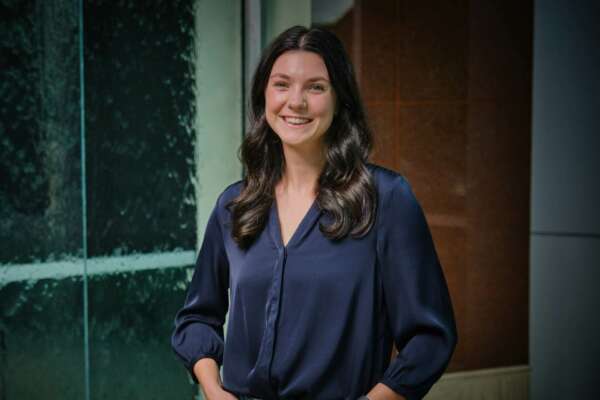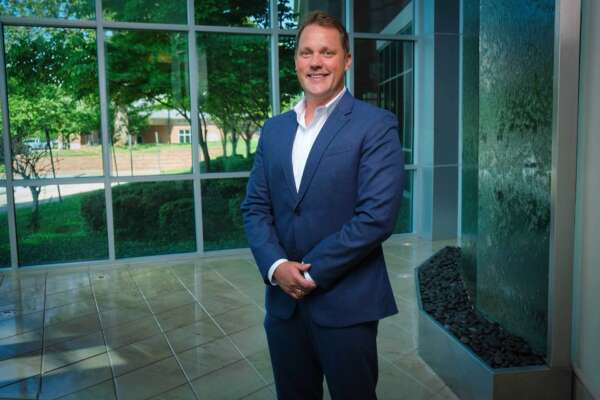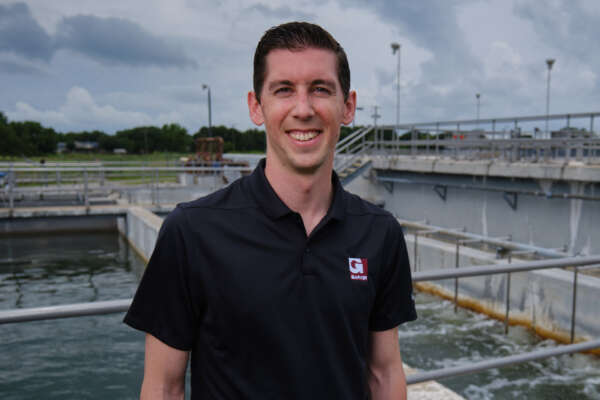With Garver as a partner, Widefield Water and Sanitation District leads the charge in Colorado through forward-thinking innovations
WWSD, one of the largest drinking water providers in Colorado, started PFAS treatment with anion exchange (AEX) resin before regulations were in place and continues to innovate, exploring next-generation AEX and nanofiltration.
Project Details
- Garver developed long-term strategic plan for PFAS piloting.
- Garver assisted WWSD in procuring $300,000 in funding from the Bureau of Reclamation
- Garver is evaluating emerging technologies and treatment trains for PFAS removal - next-generation ion exchange resins, electrocoagulation, and hollow fiber nanofiltration - to facilitate PFAS removal from challenging waters.
- Garver is working with The Water Tower in Gwinnett County, Georgia, to develop new testing methods to decrease PFAS analytical costs.
South of Colorado Springs and serving a population of nearly 40,000, Widefield is a growing community. Their water and wastewater systems are run by the Widefield Water and Sanitation District (WWSD), a forward-thinking utility always staying ahead of industry standards.
As part of this mindset, WWSD wanted a master plan that would set them on the right path for the next 10 years. In 2019, Garver began working with them to evaluate not just part of their system but the entirety of it – water treatment, distribution, water resources, wastewater treatment, and collections.
“Over the course of two years, Garver evaluated and assessed every bit of equipment, every process, and determined what would be needed for the next 10 years. It’s been enjoyable to help a community plan so well for their future,” said Garver Colorado Water Team Leader Rick Huggins, PhD, PE, who is overseeing the master plan. The master plan provided conceptual level design of the most beneficial recommended improvements, which would allow them to be implemented quickly, when needed, from off-the-shelf documents ready and waiting.
From there, Garver naturally transitioned into a trusted advisor role for WWSD, working with them on several key projects to improve their water and wastewater systems. WWSD had the forethought to stay ahead of the needs of their growing population and the changing regulatory landscape.
As part of this, WWSD requested additional on-call modeling support and insight into their operations from Garver. One such project included designing 3.5 miles of 24-inch water line critical to their operations, as it connects their main supply of treated water storage to the water system.
But WWSD’s forward thinking didn’t end there. WWSD had Garver evaluate future improvements to their current per- and polyfluoroalkyl substances (PFAS) treatment system. These efforts included insight and research support to optimize their system and evaluate PFAS in their wastewater reclamation facility.
Preparing for PFAS treatment and taking the next steps
Since 2016, WWSD has been preparing for PFAS through piloting of water and wastewater treatment methods to stay ahead of the growing industry concern. When it came time for their master plan, PFAS efforts were a part of it. Garver worked with WWSD to discuss sampling and understand the potential sources of PFAS into their system, which turned out to primarily stem from a nearby U.S. Air Force base.
"Not every utility puts such clearly defined strategic plans in place as WWSD. It’s great to be a part of that."
Rick Huggins, Ph.D., PE
Colorado Regional Water Business Team Leader
“Garver collaborated with WWSD to develop strategic plans for long-term piloting efforts to address issues with other raw water sources and their WWTP, since initial plans mostly focused on their WTP. The goal is to update this strategic plan every year with new data and adapt it according to the data that’s found. Not every utility puts such clearly defined strategic plans in place as WWSD. It’s great to be a part of that,” said Garver Colorado Regional Water Business Team Leader Rick Huggins, Ph.D., PE
Evaluating emerging technologies and pilot testing their efficacy
While WWSD was aware that reverse osmosis and nanofiltration were prime technologies for tackling PFAS removal, they wanted to evaluate other alternatives as well. In doing so, they’d make sure the technology chosen for their facilities would be the best suited and most cost effective.
The pilot testing being conducted with Garver includes several emerging technologies: next generation anion exchange resins, electrocoagulation, and hollow fiber nanofiltration. WWSD is also looking at new testing methods, one of which is adsorbable organic fluorine (AOF). In a future phase, Garver’s evaluation will also look at methods to regenerate resins and destroy PFAS. This testing and evaluation provides direct support to help WWSD meet their goal: “We want to bring practical PFAS research to the forefront, to develop solutions that utilities everywhere can implement to reach their treatment goals,” said WWSD District Manager Lucas Hale.
Securing a $300,000 grant with Garver funding support
WWSD needed funding to keep their PFAS efforts ahead of regulations. Garver supported WWSD by finding grants that would best suit their piloting and research efforts. This included helping WWSD find research partners able to address research and development questions arising from pilot testing, creating an extra layer of support for WWSD.
Through funding efforts, Garver helped WWSD secure a $300,000 Bureau of Reclamation grant that will help WWSD fund long-term testing and research initiatives for the water and wastewater systems.
Evaluating new methods to reduce PFAS-associated costs with The Water Tower
The Water Tower in Gwinnett County, GA, even became involved in WWSD’s PFAS efforts. The Water Tower is an innovation hub that brings together utilities, researchers, private entities, and consultants to collaborate and find new, innovative solutions to our most pressing water/wastewater challenges.
WWSD and Garver (who is a member of The Water Tower) are working to evaluate testing methods for PFAS at The Water Tower’s laboratory, including calculating total AOF to understand the presence of PFAS beyond the compounds included in ongoing regulatory activities to better prepare for future requirements. Currently, WWSD and Garver are also working with The Water Tower to develop new methods that would reduce the cost of PFAS monitoring, using water samples from WWSD’s water system. This will allow us to test more treatment processes and scenarios, informing future designs.
Tackling the legal landscape
Research, piloting, and funding aren’t the only ways Garver has been able to help WWSD with PFAS issues. WWSD asked Garver to serve as a potential expert witness for WWSD’s role in the 3M and DuPont settlements, which were based on perfluorooctanoic acid (PFOA) and perfluorooctanesulfonic acid (PFOS) findings only, ignoring other PFAS compounds. WWSD led the charge in making sure they and other utilities were properly compensated as part of the settlement.
"WWSD knew the proposed settlement needed to be evaluated and tasked us to help them strategize payment terms."
Rick Huggins, PhD, PE
Colorado Water Team Leader
“When WWSD reached out and asked Garver to be a potential witness, we were happy to step in and offer any support they needed. WWSD knew the proposed settlement needed to be evaluated and tasked us to help them strategize payment terms,” said Huggins.
As a result, WWSD is advocating for all utilities involved to get a fair deal, helping utilities realize if they accept the award for PFOA and PFOS, they won’t be awarded settlements for other PFAS compounds.
Leading Colorado into the future of PFAS treatment
The future for WWSD is staying one step ahead of not just PFAS regulations but also the needs of their community. They’re already planning to work with Garver to update their master plan, implement new odor control measures, and conduct additional PFAS testing at their WWTP. “With utilities like WWSD paving the way in Colorado, the state’s other utilities can follow in their steps and be innovators in PFAS treatment. And Garver is excited to be a part of that movement,” said Huggins.









Share this article